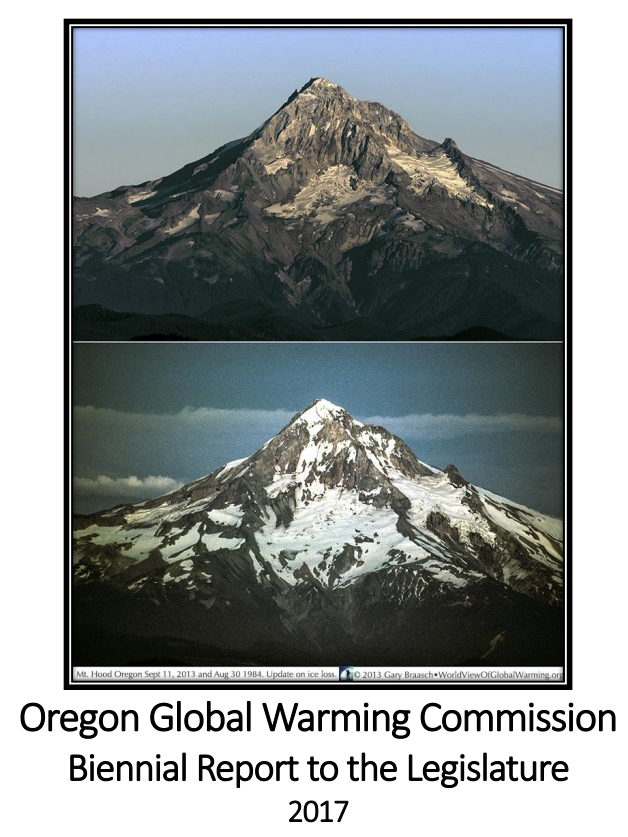Climate change gets lip service, highways get billions.
Like many states and cities, Oregon has been a leader in setting its own local goals for reducing greenhouse gases. In a law adopted in 2007, the state set the goal of reducing its greenhouse gas emissions by 10 percent from 1990 levels by the year 2020, and the further goal of reducing them by 75 percent by 2050. In light of the Trump Administration’s denial of the scientific evidence on global warming, many environmental activists are pinning their hopes for progress on this kind of local effort.
Sadly, there’s a deep flaw in this approach. Despite the high-minded and quantitative nature of these goals, the actual date for their achievement is set far in the future, typically beyond the expected political lifetime of any of the public officials adopting these goals. And there’s little if any mechanism, aside from moral suasion, to require accomplishment of these goals. So in practice, what they may do is simply give politicians cover for expressing concern about climate change, without actually having to do anything substantive or difficult to attain it.

That fear was brought home by the release of the Oregon Global Warming Commission’s biennial report to the state Legislature. In addition to its goal, Oregon has a tiny citizen commission charged with riding herd on the state’s emissions inventory, and looking to see what, if any progress the state is making in reducing greenhouse gases. The news is not good. Oregon’s emissions are rising. The commission warns:
Key Takeaway: Rising transportation emissions are driving increases in statewide emissions.
As the updated greenhouse gas inventory data clearly indicate, Oregon’s emissions had been declining or holding relatively steady through 2014 but recorded a non-trivial increase between 2014 and 2015. The majority of this increase (60%) was due to increased emissions from the transportation sector, specifically the use of gasoline and diesel. The reversal of the recent trend in emissions declines, both in the transportation sector and statewide, likely means that Oregon will not meet its 2020 emission reduction goal. More action is needed, particularly in the transportation sector, if the state is to meet our longer-term GHG reduction goals.
This finding confirms exactly what we’ve pointed out at City Observatory over the past year: the decline in gasoline prices in mid-2014 prompted an increasing in driving and with it, an increase in crashes and carbon pollution. Oregon’s vehicle miles traveled, which had been declining steadily, ticked up in 2015, as did its fatality rate.
As a result of the growth in driving and related emissions, and slower than expected progress in reducing emissions from other sources, it looks like there’s no way the state is anywhere close to the path it needs to be on to reach its 2050 goal. (The blue line shows progress to date, the yellow line is the glide slope to achieving the state’s adopted 2050 goal, and the red line is the commission’s estimate of where the state is headed).

In the best of all possible worlds, this warning would prompt the Governor and legislators–ever mindful of their legally enacted commitment to reduce greenhouse gas emissions–to redouble their efforts and figure out ways to discourage carbon pollution, especially from transportation.
In the real world, legislators are actually poised to do pretty much the opposite. One of the leading priorities for the 2017 Oregon legislature is the enactment of a major new transportation package. Among its chief priorities: adding additional capacity to the state’s freeways. A new legislative report identifies a “need” for $1.3 billion annually in additional transportation funds for state and local highway projects. As has been demonstrated time and again, additional capacity produces additional driving and increased emissions. And ironically, this proposal comes forward as the state faces a $1.7 billion shortfall in its general fund budget for the coming biennium, which is likely to lead to significant cuts to funding for schools and other public services.
Climate data now shows that 2016 was the warmest year on record. Global warming is an increasingly obvious reality. We’re going to need something more than soothing rhetoric and distant goals to avoid dramatically altering our planet. We’ll check in again next Groundhog’s day to see if anything’s different.